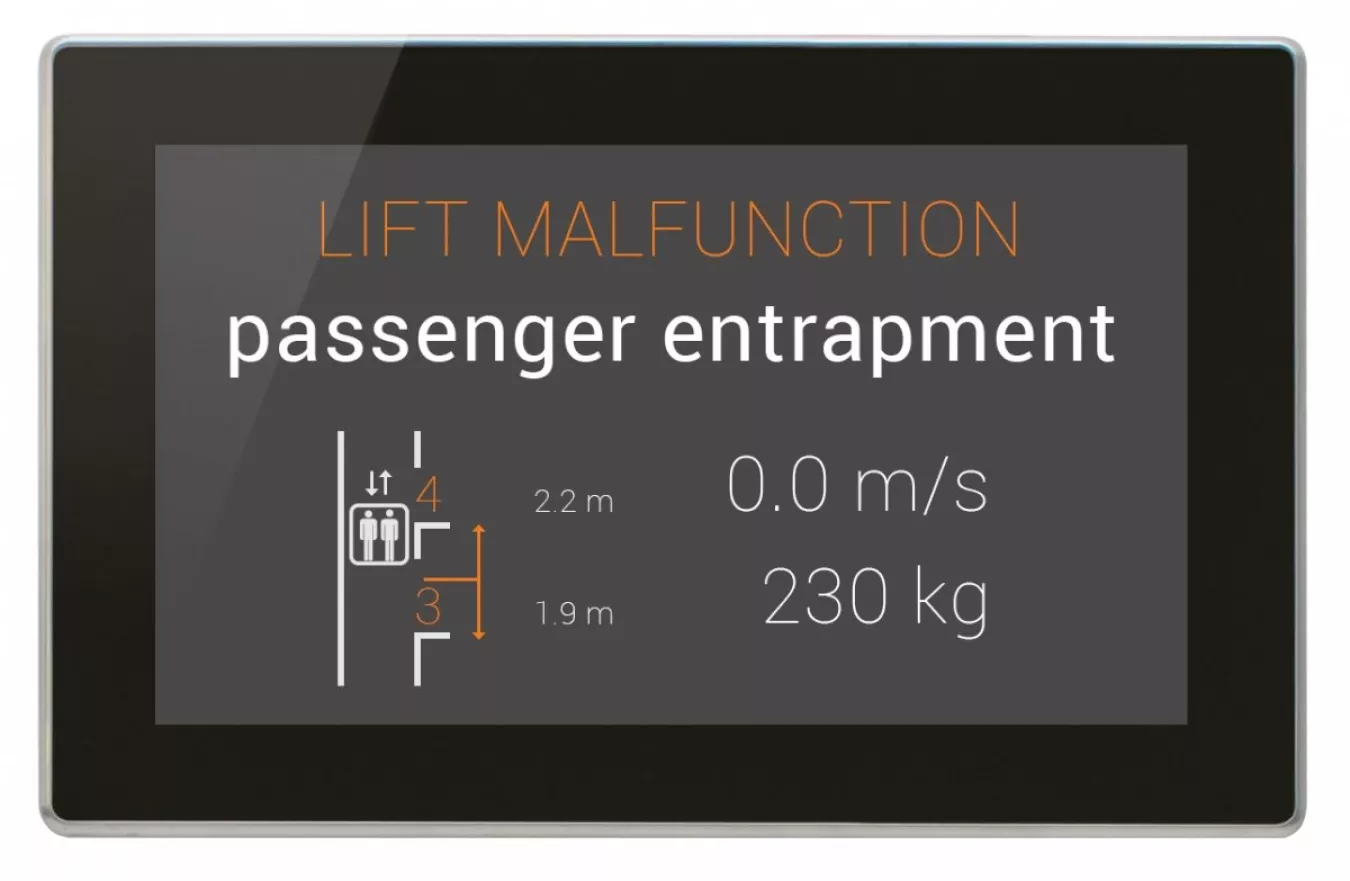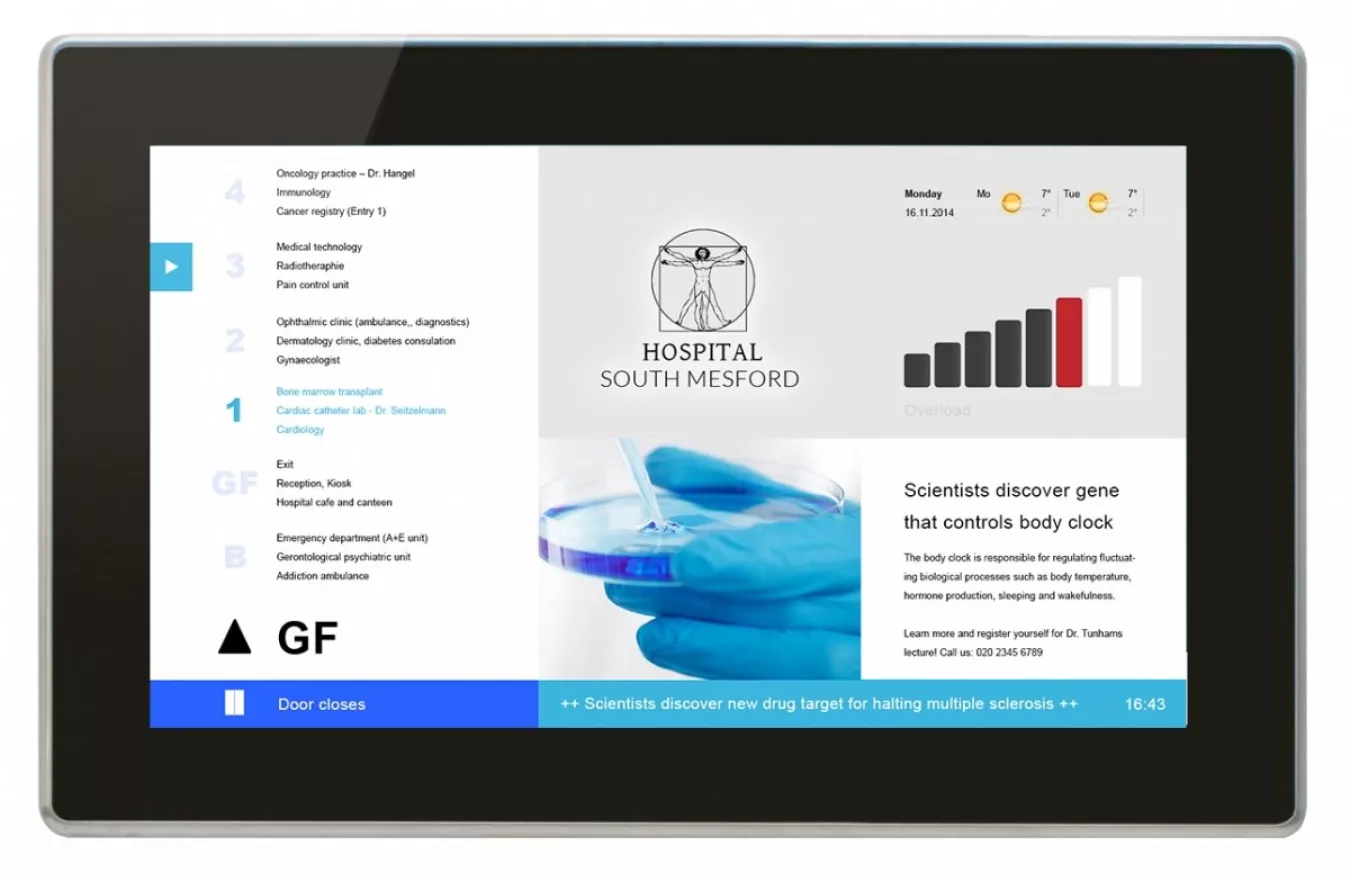Load measuring sensors for elevators are used in many different areas. Usually the identification of overload situations is sufficient. In other applications though, exact information about the load situation is necessary. New measuring processes and the interconnection of sensors via the field bus of the lift are now offering flexible possibilities for evaluation and visualization for many application cases.
In the past the load measuring tool of a lift provided three different static signals: ‘no-load’ when the lift is empty, ‘full load’ when no additional load could be taken and ‘overload’ when the permissible nominal load was exceeded and the lift was not allowed to move off.
Thanks to the interconnection via the field bus the absolute measurements of the sensors are also available now. In combination with modern TFT displays these measurements can be depicted directly, but also as trend indicator, depending on the use case.
Depicting the absolute measurements is especially useful for freight elevators. Here the load displays is often used to determine the weight of goods when they are transported for loading. In this case the lift is used as simple scale and the measured load can be depicted directly on the display in the lift car or in the halls on each floor.
Img.: Depiction of the current load on a display in the lift car.
For passenger elevators in normal operation, displaying the absolute measurement of the load is a ‘no go’. Many users would feel highly uncomfortable if others could see what their weight is. In this case a trend indicator without the absolute value - e.g. via bars or an analogue pointer instrument.
Img.: Depiction of the current load in the cabin through a pointer instrument without the absolute value.
In case of a lift malfunction on the other hand the depiction of the current load as absolute value can be very helpful even in passenger elevators. When it comes to trapped passengers the floor displays can provide more information to the current location and load of the lift. This can speed up the deliverance of trapped persons and thus can be very valuable especially when time is short e.g. because of a fire.
Img.: If data from a position and load measuring sensor are provided via the field bus, this information can speed up the deliverance of trapped persons.
The interconnection of floor displays with load measuring sensors is also useful in normal operation. It can be used to avoid incomprehension and frustration of users. For example in the situation when they wait for the lift and it drives past the floor without stopping. One reason for this can be that the cabin is already full. This is determined by the controlling when the load sensor sends the ‘overload’ signal. Instead of depicting this signal for the user though, it can be explained more clearly by displaying a picture of many people together in an elevator or outputs such as ‘full cabin’.
The implementation of indication functions like this is very easy with the flexyPage system. The high resolution displays can visualize sensor data independently thanks to various integrated widgets. With just a few clicks these widgets can be adapted so that depending on the use case the absolute value in kilogramm, an analogue pointer instrument with or without values or a bar graph for relative display of the load is used.
When there are large displays with high resolution in the lift for depicting advertisements, the measurements of the load sensors could also be used for a user based billing system. In this case the load measurement is used to calculate the number of persons in the lift car, which then will be saved in a database in connection with the advertisement depicted at that time. The advertising companies then will pay their fees depending on the quantity of people the ad has been shown to.
Img.: Depiction of advertisement and the relative load on a display in a lift car.
Summary
Modern display systems in lifts together with the sensors of the elevator offer many new possibilities. Some of them we described for you on our website flexyPage.de.
The base of this application is the interconnection via the field bus of the lift and the open standard CANopen-Lift, which enables the communication between lift controllers, actuators, sensors and modern display systems.
More and more sensor manufacturers take the opportunity and introduce new innovative products to the market. An overview of the suppliers can be found on CANopen-Lift.org.
Img.: Various widgets for displaying the current load in the elevator
Read more articles
- Log in to post comments






